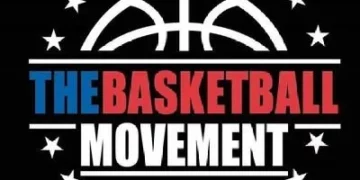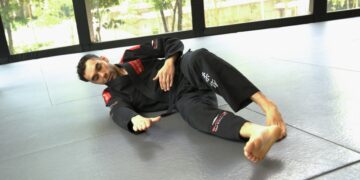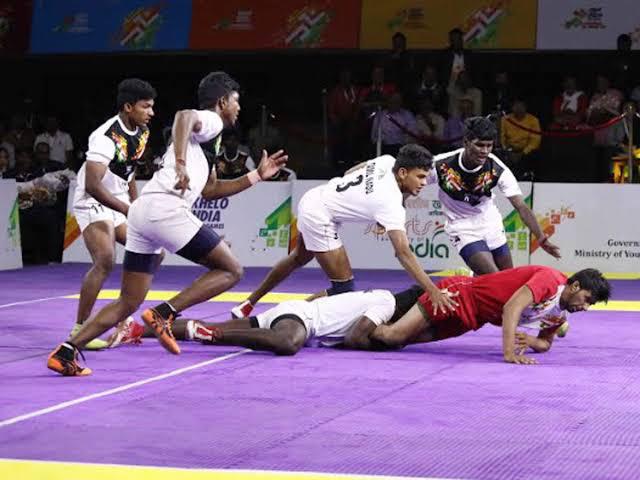Feeling a little anxious heading into your first sparring session in martial arts is perfectly normal. You’ve never had the chance to test your skills against resisting opponents, and you’re unsure about how well you’ll be able to defend against their attacks.
Don’t sweat it, it’s just a sparring session, not the finals of a ONE Championship Muay Thai tournament. Experienced instructors typically won’t clear you to spar if you aren’t ready, and your training partners are expected to go light on you if it’s your first time. In other words, there’s no reason to be intimidated when everyone around you in the dojo wants to see you succeed.
Why Sparring Feels So Intimidating For First Timers
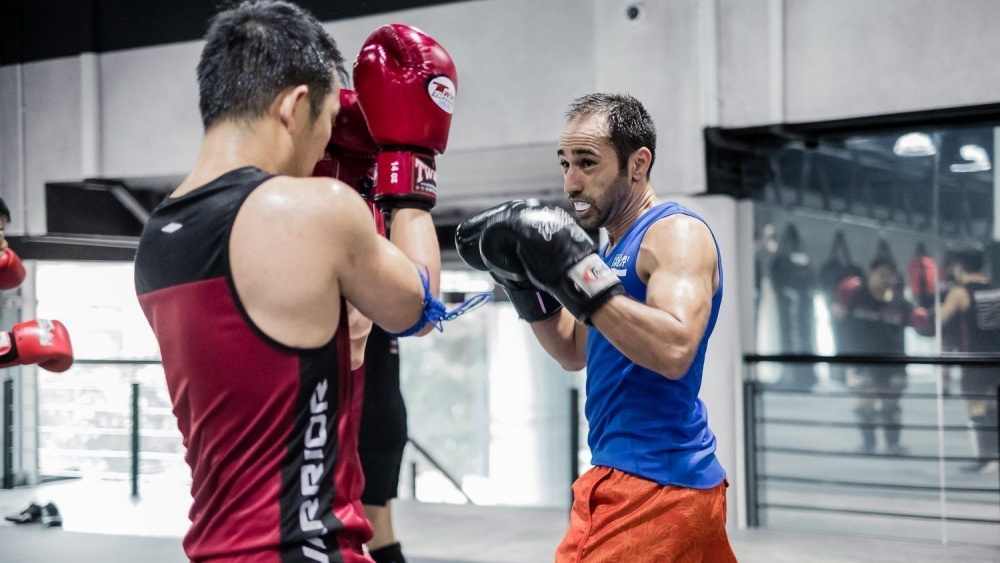
Performance and social anxiety are common in sparring, but with the right mindset and prep, you can turn nerves into focus and confidence.
Performance anxiety is pretty common wherever people compete against each other. It is estimated that about 30 to 60 percent of athletes experience pre-competition nerves, which manifests in various ways, like anxiety, sweaty palms, or feeling demoralized.
Social anxiety also makes performing in front of others that much more nerve-racking. Research shows that over 36% of young adults have social anxiety disorder (SAD). For about 9% of them, it will be an issue that persists for the rest of their lives.
Unknown variables raise your anxiety level even higher. You don’t know your sparring partners’ strengths, styles, and speeds, which amps up the “fight or flight” response.
Fortunately, there are simple things you can do to make your first sparring session less intimidating, so you can focus on testing out your moves instead of feeling overwhelmed with anxiety.
1) Control Your Nerves: Breathing And Mental Prep
Spend a few minutes performing a simple breathing drill known as the 4-7-8 technique to calm your nerves before stepping on the mat, ring, or cage. Inhale for four seconds, hold your breath for seven seconds, and exhale for eight seconds.
Research shows that controlled breathing exercises boost parasympathetic activity, counterbalancing stress hormones.
Visualize For Mental Preparation
After you’ve calmed yourself with some breathing exercises, spend a few minutes visualizing how you expect your sparring session to unfold. Picture yourself executing techniques and defending against your opponent’s attacks. Studies show mental rehearsal helps to reduce anxiety and improve athletic performance as much as physical practice.
2) Read Your Sparring Partner’s Body Language
Albert Mehrabian’s 7-38-55 communication model suggests that 7% of communication is verbal, 38% is done through tone and voice, while 55% is through body language. This makes body language the most vital form of communication to understand in all aspects of life.
Some basic cues you should be able to interpret by the time you’re ready for your first sparring match include:
- Guard High: A high, tight guard signals a focus on defense. You can counter by targeting the body to get your sparring partner to lower their guard.
- Weight Distribution: Expect forward pressure if your opponent puts most of their weight on their front foot. Conversely, an opponent putting most of their weight on their back foot might be a sign they plan on pulling back and countering your attacks.
Focus your eyes on your opponent’s chest or shoulders when sparring, and you’ll start to notice small tells in their shoulder and hip movement that let you know when they’re about to strike.
3) Understand The Unspoken Etiquette: The Code Of The Ring
Every gym has its vibe, but most sparring rooms share some universal courtesies:
- Touch gloves first, fist bump, or shake hands before sparring sessions. It’s a sign of respect and helps to build trust. It also reminds you both that you’re there to help each other improve.
- Communicate the intensity you’re aiming for and stick to it.
- Tap out early if you’re feeling overwhelmed or take a knee.
- Don’t showboat while sparring. That’s never okay.
- Let your sparring partner know you want them to turn down the intensity if they’re going too hard. Don’t escalate and match their intensity unless you’re fine training that way.
4) Create A Pre-Sparring Routine
Create a routine that gets you ready for action on sparring days. Perform warm-up exercises such as leg swings, hip circles, and arm rotations to loosen your joints and get them ready. Listen to some music that gets you pumped up and ready for fights.
Many fighters have a favorite song they always listen to before fighting to prepare themselves psychologically. You can also use the song on competition days for the same reason.
5) Partner Negotiation: Building Mutual Trust
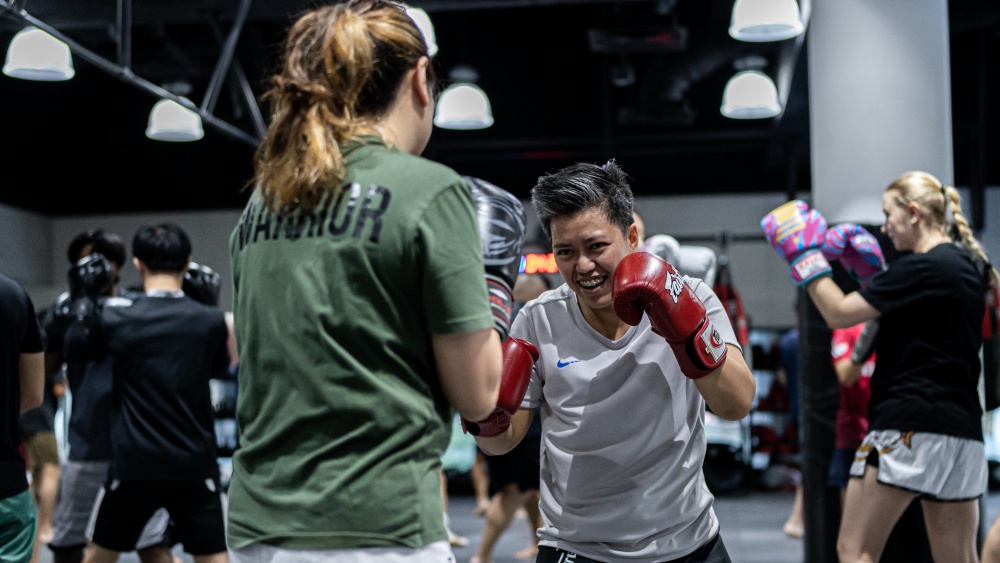
Always communicate your intensity and intent before sparring to ensure a safe and productive session for both partners.
Have a quick 30-second chat with your training partner to build trust with each other. Let them know your experience level and any special requests you have, like going light on headshots. You can also inform them you’re open to constructive feedback while sparring. A considerably more skilled training partner will often let you know what you’re doing wrong.
Communicating with training partners before sparring sessions sets clear expectations, setting up the stage for productive work.
6) After-Action Review: The Quick Debrief
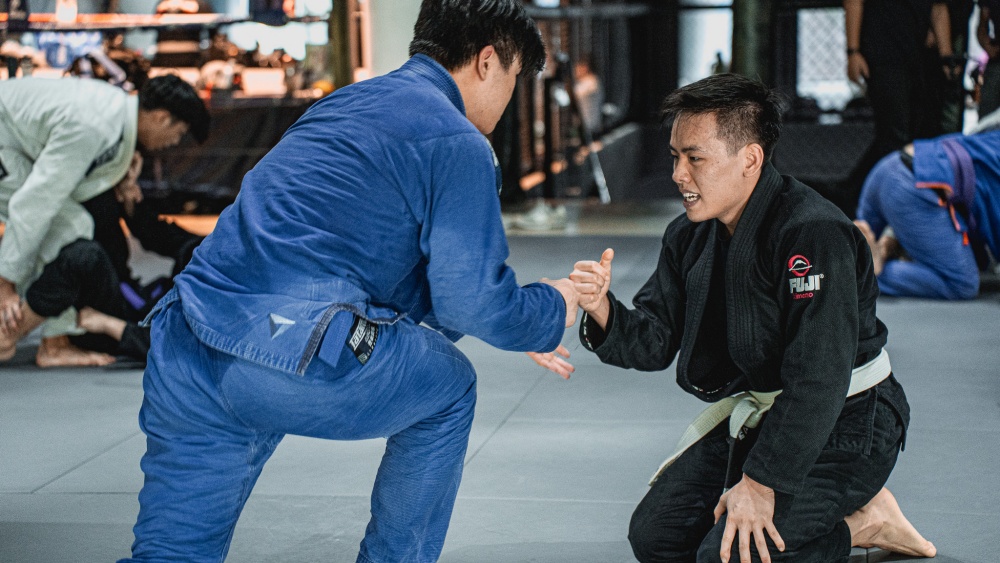
Fist bump after sparring, exchange feedback, and help each other grow by sharing strengths and areas to improve.
Shake hands or fist bump your training partners after sparring sessions and share tips. Let them know what they did well while they do the same for you. Point out any glaring holes in the fighting style you think they should work on.
Common First-Timer Sparring Mistakes
Some of the most common pitfalls fighters fall into their first time sparring include:
- Being too tense. Relax your muscles and breathe. It’ll make your techniques more fluid.
- Dropping your hands. Holding your hands up like fighters do for prolonged periods isn’t natural, so it typically takes some time to build the habit.,
- Overreaching. It’s better to shorten distances until you can gauge distances well enough to fight at the end of your range.
- Not resetting. Take a step back after each exchange and breathe before reengaging.
It’s Just Practice—But It Builds Warriors
No one feels 100% comfortable on the mat, ring, or cage their first time sparring, but each second you spend in there makes you more capable as a fighter. Stay calm, communicate, set boundaries, share tips with training partners, and your sparring sessions will eventually feel like intense chess matches you start to crave.
You may also like:
Fighting At A Distance: How To Set Up Your Punches Against Smaller Opponent
The cross is one of the most powerful punches in a boxer’s arsenal, and it also covers more distance than every other type of punch besides the jab. It’s an outside range weapon that can…
In striking arts, size and reach are important tools, but they don’t guarantee success. When facing a smaller opponent, the challenge often lies in their speed, mobility, and ability to slip into range before you…
Kazakhstan is home to famous boxing and fighting icons like Gennadiy “GGG” Golovkin and Shavkat Rakhmonov. The country is known for its rich culture and heritage, producing some of the toughest and fiercest warriors on…
Head shots lead to some of the most amazing finishes in combat sports such as Boxing, Muay Thai, or Mixed Martial Arts, but body shots accomplish the same goal in a subtler way. A well-executed…
Boxing is a sport where fighters develop not only physical skills but also distinct personalities and philosophies in the ring. Over time, certain approaches to fighting have become so recognizable that they’re referred to as…
Have you ever watched the fight winner declared and thought, “Wait… how did they win that?” Welcome to the sneaky, strategic, and often misunderstood world of stealing rounds. It’s not cheating. It’s not luck. It’s…
Intermittent fasting (IF) has been popular among martial arts fighters for decades, with legends like Georges St. Pierre swearing by its effectiveness. While the idea of skipping meals before intense training often sparks debate, this…
Brazilian Jiu-Jitsu is known for its highly technical ground game, but the truth is every match begins standing. Whether it’s a competition setting, a self-defense scenario, or an MMA fight, learning how to bring your…
We’ve all been there before, that moment when life throws a spinning heel kick to your face that you didn’t see coming. It doesn’t take much to make that feeling even worse. Bills pile up,…
In a city as fast-paced and high-performing as Singapore, finding time to take care of your health can feel like a luxury. Between juggling demanding jobs, long commutes, and constant digital distractions, our urban lifestyle…
In Brazilian Jiu-Jitsu, facing an unorthodox position like the inverted guard can be overwhelming, especially for newer practitioners or those more familiar with traditional passing sequences. The inverted guard flips the script, quite literally, and…
Many people think ripped muscles, lightning hand and leg speed, and perfect technique are the only things you need to develop knockout power in striking-based martial arts such as Muay Thai, Boxing, and Mixed Martial…




